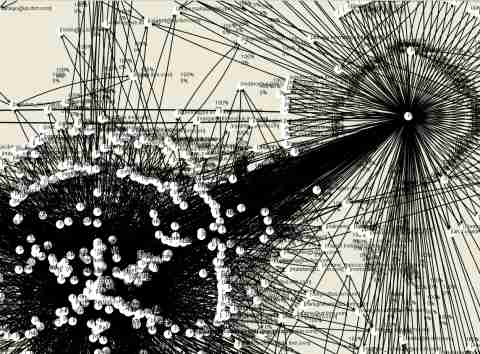Over the past few years I’ve done a lot of work on social networks, in particular in their visualisation. Some of it has been on customer projects, but a lot has been on the side, during lunch breaks and weekends – I just thought it was kind of cool. The sort of thing I’ve done is look at email and IM traffic (with a user’s consent) and generate networks from there, showing who has strong connections with each other. There isn’t anything especially new here, but the diagrams do look neat and it’s generated a lot of interest within IBM.
The problem that always comes up is privacy. It isn’t actually the technology that’s difficult, it’s how you can do some of these things and maintain people’s privacy. People are, understandably, not always too happy about participating in this sort of thing if their email/IM traffic gets analysed. So, instead I looked at IBM’s internal blogs (which are much more public to begin with) and drew the same networks from there, based on who is commenting or referencing each other. I managed to produce the visualisations using a mixture of IBM products (DB2, Intelligent Miner Modelling and Intelligent Miner Visualization) and some custom hacked code… by me!

I’m not sure what the future for social network technology is. I’m currently trying to come up with a better way of rendering this information. These big network diagrams aren’t always that useful for the average user.
– Darren Shaw (Emerging Technology Services, IBM Hursley)

 (not pretty but we only had 10×10) on the million dollar homepage. Look down from the first i in million on the logo at the top, about 6 rows down, and there we are. Does this page work? Well I could not resist clicking on the “Even monkeys fall from trees” link and I made a purchase, but maybe it shows I am gullable. A pre-req for being an early adopter?
(not pretty but we only had 10×10) on the million dollar homepage. Look down from the first i in million on the logo at the top, about 6 rows down, and there we are. Does this page work? Well I could not resist clicking on the “Even monkeys fall from trees” link and I made a purchase, but maybe it shows I am gullable. A pre-req for being an early adopter?